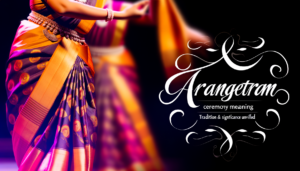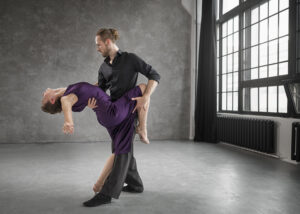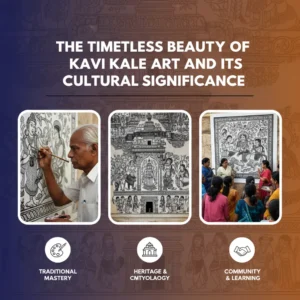What is Carnatic Music? Some of the Most Important Facts Are Listed Below
Carnatic music is a rich and varied school of classical music originating from South India. It contains complex rhythms and compositions that are fascinating and highly emotive. This page will provide a general overview of Carnatic music, its history, main points, and why it is different from other forms of music. This guide will assist you in learning about the fascinating musical tradition of Carnatic music, if you wish to attend Carnatic concerts or Carnatic music concerts in Bangalore, or begin Carnatic music classes near me locally.
Karnataka Sangitam, or Carnatic music, is a music that originated from ancient South Indian music traditions. It is one of the oldest forms of music in the world and has its roots in the Vedic era. It has evolved over the years with influences from other civilizations and has been passed on through the vehicle of stories.
How Carnatic Music Has Changed
During the course of centuries, Carnatic music evolved comprehensively. Various musicians and composers, such as Purandara Dasa, also popularly referred to as the “Father of Carnatic Music,” enriched it in the Middle Ages. His works established the foundation for the systematized form of Carnatic music in existence today.
Tyagaraja, Muthuswami Dikshitar, and Syama Sastri were the foremost personalities of Carnatic music during the 18th and 19th centuries. These great masters composed a great deal of music which continues to be sung and appreciated at Carnatic music concerts throughout the world.
Key Elements of Carnatic Music
Ragas and Tunes
Ragas are the melodic structures that give the base to Carnatic music. Ragas assist a musician in improvising and composing Carnatic melodies. There are a number of swaras in Carnatic music (notes) of a raga which produce diverse emotions and moods. There exist a list of 72 ragas in Carnatic music, also referred to as Melakarta ragas, which are the origins of hundreds of other ragas.
Swaras in Carnatic Music
Swaras in Carnatic music are the fundamental music notes, such as the solfège in Western music. A few of them are Sa (Shadja), Ri (Rishabha), Ga (Gandhara), Ma (Madhyama), Pa (Panchama), Da (Dhaivata), and Ni (Nishada). Swaras are the pillars of ragas, and their combinations in different ways create various melodic patterns.
Talas: The Cycles of Rhythm
Talas in Carnatic music are the patterns of rhythm which provide form to Carnatic music. They consist of a specific number of beats and need to be played in order to maintain the tempo while playing. Adi, Rupaka, and Misra Chapu are three popular talas. Both students and performers who wish to sit for Carnatic music exams need to learn playing talas.
Instruments of Carnatic Music
The Principal Instruments of Carnatic Music
There are numerous kinds of Carnatic music instruments, and each has a special sound and function. Some of the primairy instruments in Carnatic music are:
- Veena: A string instrument that has a rich, resonating sound and is typically employed for solo and accompaniment.
- Mridangam: The principal percussion instrument, a double-headed drum.
- Violin: The violin is a western classical music instrument frequently utilized to accompany other instruments.
- Flute: Flute is frequently opted for solo performances as well as for group performances since it possesses a melodious and sweet sound.
Supporting Instruments
Some of the other support instruments utilized in Carnatic music performances include a ghatam (clay pot), a kanjira (small frame drum), and morsing (jaw harp).
Learning Carnatic Music
How to Locate Carnatic Music Classes in Your Area
There are various schools and instructors who offer Carnatic music classes near me to students of every age and skill level. It is important to get a good instructor who will teach you the intricacies of this form of art if you are interested in taking physical music lessons or online classes.
Preparing for Carnatic Music Tests
Preparation for Carnatic music exams is perhaps one of the best ways of understanding how far you have progressed and earning credit for your skills. Most schools offer certification courses that cover the practical and theoretical modules. You will need to be committed and practice every day to prepare for the exams.
Listening to Carnatic Music
Listening to Carnatic Music Concerts
Perhaps the easiest entry into Carnatic music is to witness it being played. The Carnatic concerts are typically a combination of instrumental and vocal renditions, which provide the audience with the diversity and richness of the heritage. Bangalore is one of the cities renowned for its rich culture of Carnatic music, and there are numerous Carnatic music concerts in Bangalore and carnivals throughout the year.
The Enchantment of Carnatic Melodies
They tell us that Carnatic melodies are gorgeous and rich with emotions. Carnatic music has the ability to move and inspire people with its soul-stirring rendition of ragas and complex rhythms of talas.
Conclusion
Carnatic music is a timeless art form that continues to thrive in modern times. With its rich history, complex compositions, and vibrant performances, it offers a unique and rewarding experience for both listeners and practitioners. Whether you’re exploring Carnatic music for the first time or seeking to deepen your understanding, there’s no better time to dive into this captivating world.
By attending concerts, taking classes, and delving into the vast repertoire of ragas and talas, you can gain a deeper appreciation for this remarkable tradition. Whether you are in Bangalore or anywhere else in the world, Carnatic music welcomes you to explore its melodic journey and experience the timeless beauty it offers.




